Koekamp - The Hague
DELVA and Powerhouse Company combine nature and architecture in a seamless design for the new gateway to National Park ‘Hollandse Duinen’. The gateway, with its park and new visitor centre, nestles in the Koekamp, a stone’s throw from the Koningin Julianaplein and the city centre.
The visitor centre and park, designed on behalf of Staatsbosbeheer, are expected to be completed in 2024.

The landscape plays a starring role for this grand entrance to a new national park. In it, we integrated architecture and nature flawlessly.
– Paul Stavert, Partner / Architect Powerhouse Company
A green history
A stone’s throw from The Hague Central Station, Koekamp is a relic from the Middle Ages: a field for cattle, which became a deer camp (Philip the Good brought the very first deer here). From the early 17th century, the Koekamp became publicly accessible and popular for walking. Later, it was partly landscaped in English landscape style by 19th-century landscape architect Jan David Zocher. Today largely fenced in, it has become a place to admire from a distance rather than to visit.
Now Koekamp connects the train station and heart of the city with a composition of greenery, including Malieveld, Haagse Bos and the many kilometres of dunes along the coast. These areas have been merged under the umbrella of a new national park, Hollandse Duinen. The new visitor centre will be the gateway to the park and invites you to explore the Koekamp.
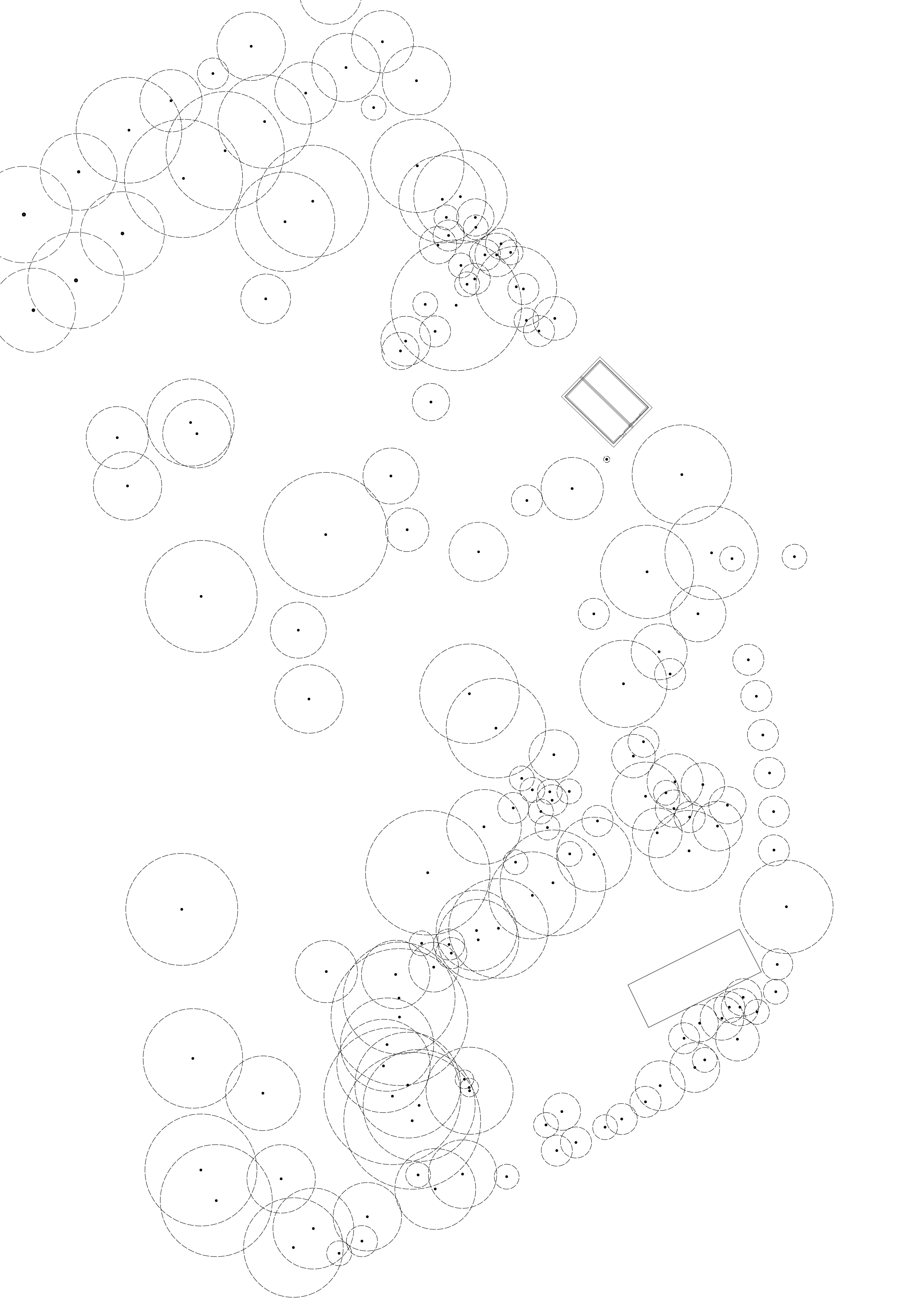
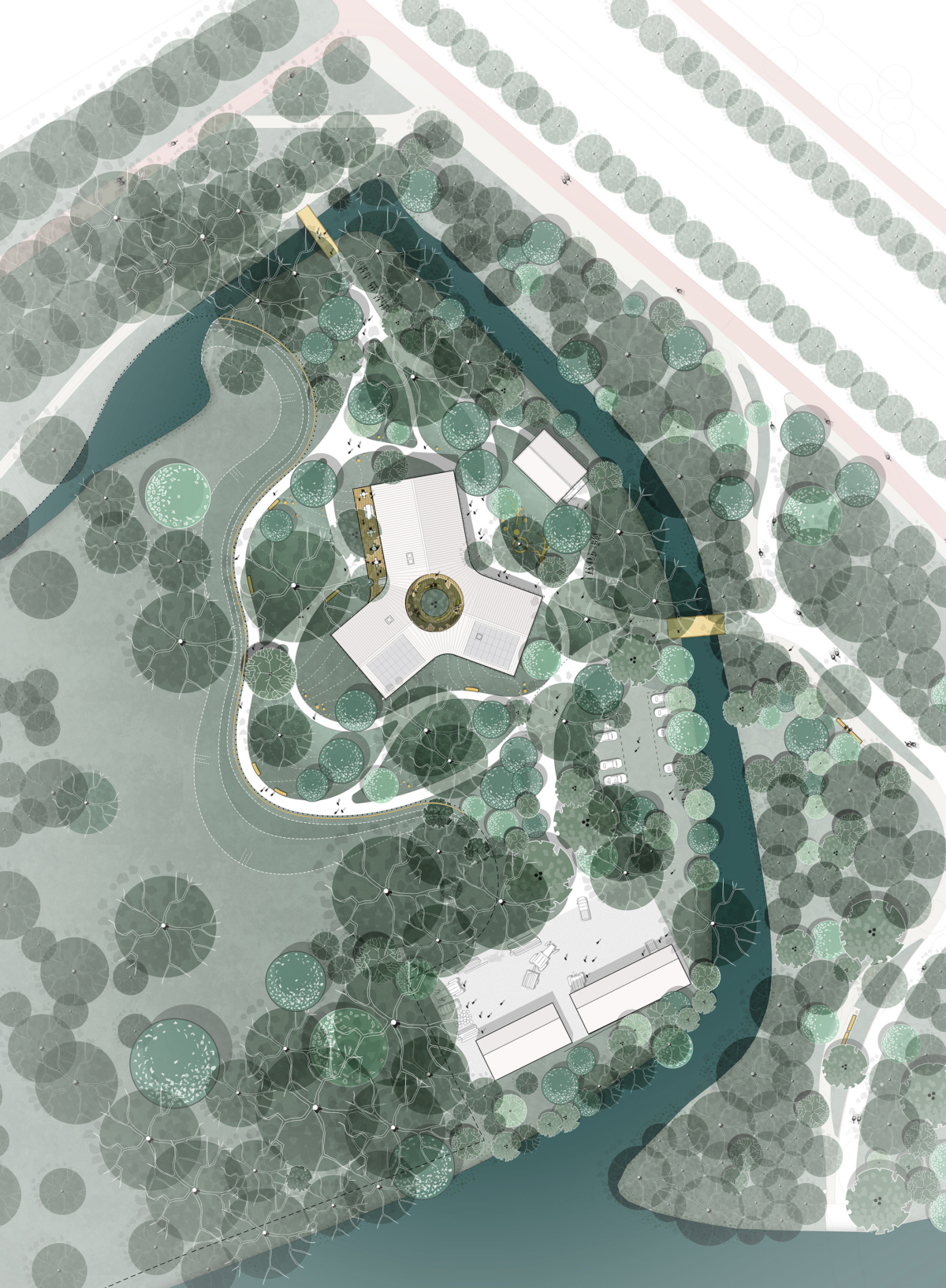
We wanted to create an entrance that is not just a building, but a landscape. The balance between architecture, programme and park design is essential here. Our inspiration was the past. Instead of repeating history, we lovingly adapt it and put it back down with respect for nature and within the design spirit of landscape architect Zocher.
– Steven Delva, Founder DELVA
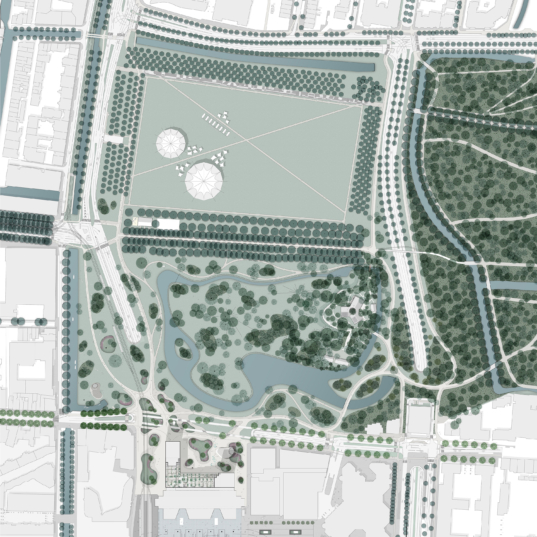
Natural heights
Koekamp is one of the four green areas of the Groene Entree: a DELVA-designed plan commissioned by the city of The Hague. It includes KJ Square (Koningin Julianaplein) at the central station, Malieveld, Het Haagse Bos and Koekamp. In the plan, Koekamp is bordered by the new Royal City Park, a lush green park that reveals the city’s diversity and is the gateway to the national park in the making. The contrast between these green landscapes in the urban structure is very pronounced, and the new visitor centre will preserve and enhance this contrast.
Koekamp will have a stronger connection to the city and the green landscapes around it. This also includes the new bridge that will provide a better connection to the park zone on Bezuidenhoutseweg. Besides the existing entrance on the east side of the site, there will be an entrance on the north side in the form of a pedestrian bridge from Malieveld. This side also used to have an entrance that connected to Koekamplaan: the Koninklijke Verbindingsweg tussen Huis ten Bosch and Noordeinde Palace. By adding this second connection, this stretch of park also becomes part of the intended walk around Koekamp, completely in line with Zocher’s ideas.
The new gateway, with its flowing paths, connects seamlessly with the surrounding city park. The pleasant paths take visitors not only to the visitor centre, but also to the edge of the deer park. From here, there is a wide view of the camp and the deer. In spring, this part of the park presents a scene of flowering stinzen plants. They are bulbs that present a beautiful display in spring and are typical of estates and woodland areas.
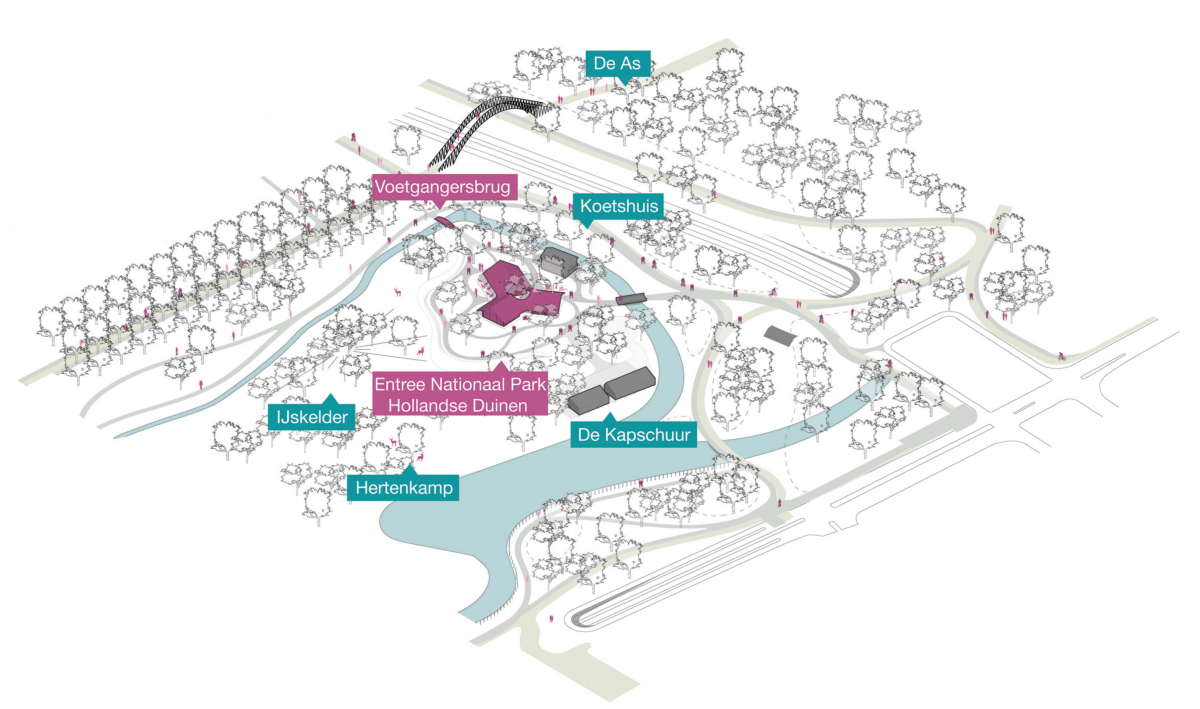
By dividing the functions among the three houses, we create an open-air experience, as visitors as well as foresters move between them. Everyone is equal under the shelter of the three-winged roof.
– Albert Richters, Associate / Architect Powerhouse Company
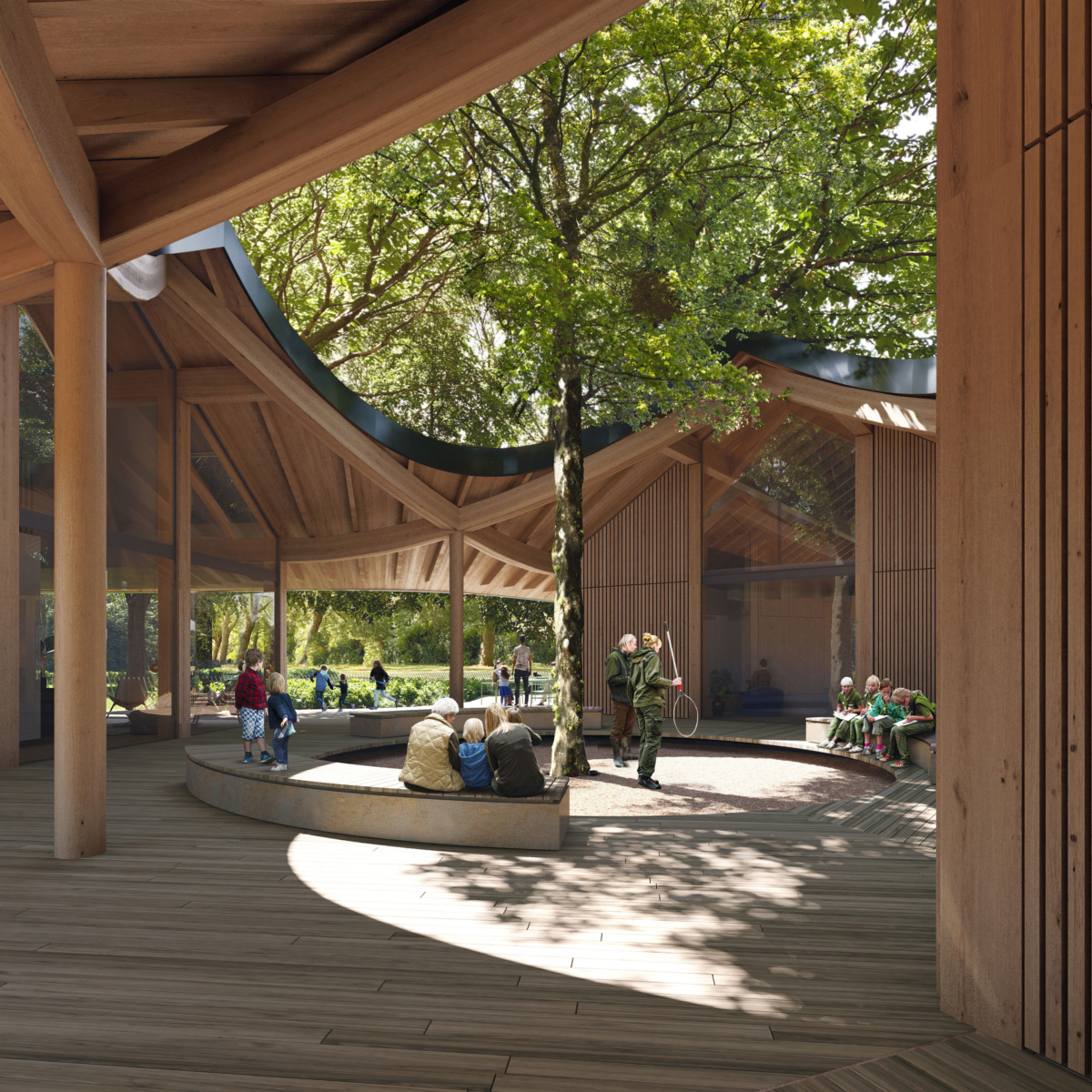
Design for trees
Koekamp’s monumental trees are guiding the design and all will be preserved. They determined the location and size of the new visitor centre. To avoid cutting down trees, architecture nestles in between them. The three houses are carefully positioned between tree trunks, under a unifying roof with three wings converging around a central circular courtyard. This will accommodate a beautiful new oak tree. The result is a design that is perfectly integrated into nature and partially obscured by it.
The two public wings house an information centre on the south side, where visitors can explore, and a restaurant on the north side. The central circular court forms an informal open-air meeting space, with room for activities such as a play area. The third wing houses the offices of Staatsbosbeheer, which also provides workshop space in an old coach house nearby. This allows visitors to partly observe and understand the work of the foresters.
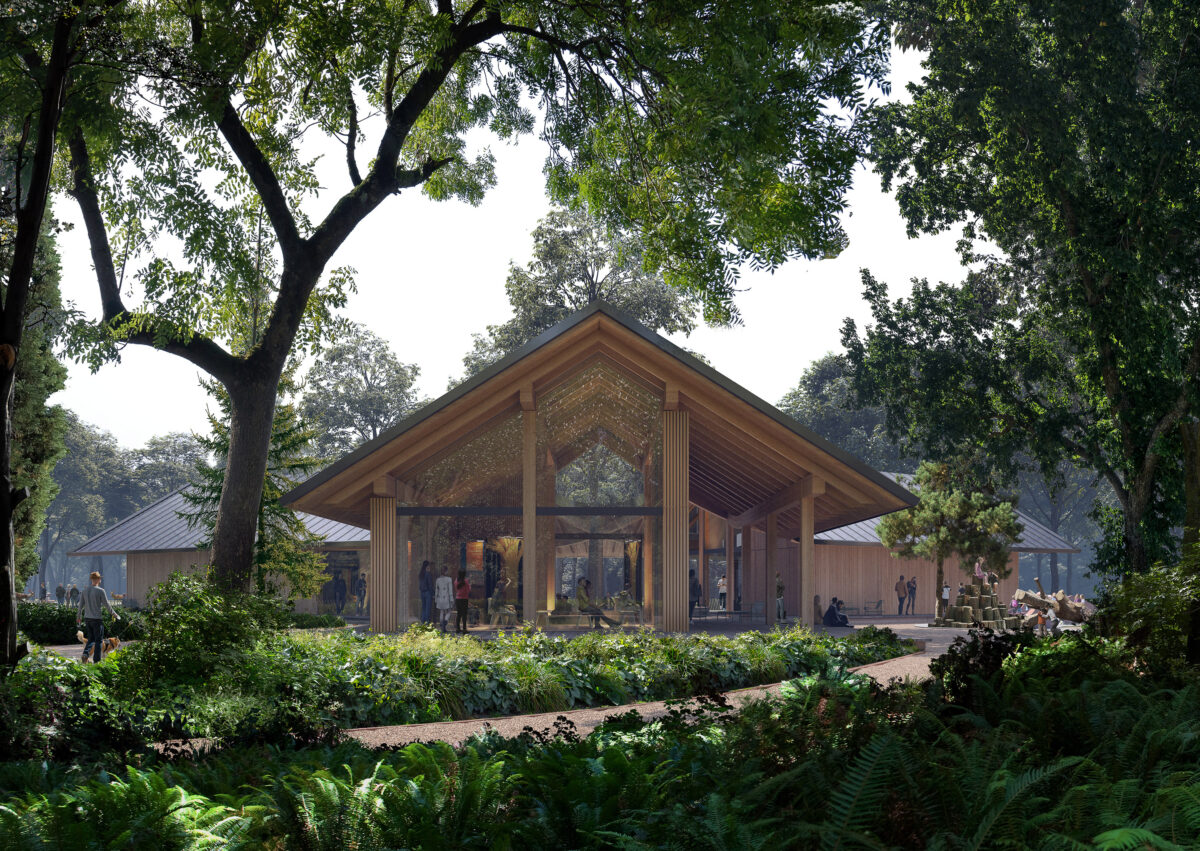
The buildings are constructed entirely of wood and glass. The end facades are fully glazed and transparent, with views to the trees on the other side, with side walls of wood and grooved detailing. This combination of facade materials – 50% wood, 50% glass – offers the greatest energy efficiency. The trio of structures rests on a floating wooden platform, surrounded by a loop pattern of paths that evoke the organic movements characteristic of Zocher’s work.
The building is a guest in the landscape, partly hidden among trees. With its human scale and rustic style, it stands in stark contrast to The Hague’s urban architecture outside the Koekamp.
– Emma Scholten, Project Architect Powerhouse Company
- Location
- The Hague
- Status
- Preliminary design
- Client
- Staatsbosbeheer
- Together with
- Powerhouse Company (architect), SmitsRinsma (cost expert), Royal HaskoningDHV (installations)